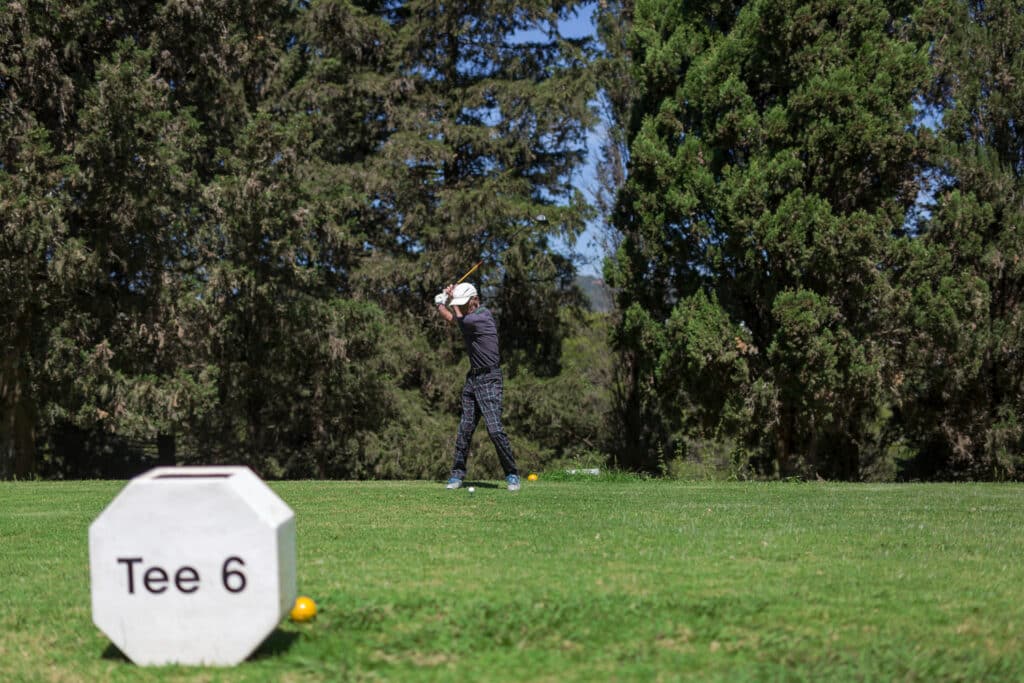Last Updated on June 7, 2023
Golf is one of the most popular and beloved sports around the world. It has a long history and boasts millions of participants and fans in many countries. Despite its popularity, golf remains a game with complex rules that must be respected to ensure fair play for all involved. This article will provide an overview of some important rules that players must obey while playing this classic sport.
Overview of the Game
Golf is a sport that requires skill, patience and an understanding of the rules. The objective of golf is to hit the ball into each hole in as few strokes as possible. To do this, players must use clubs to hit balls from various distances on different terrain around the course. Golfers are expected to obey certain etiquette when playing and adhere to specific regulations set by governing bodies such as The Royal and Ancient Golf Club, which has been responsible for codifying the Rules of Golf since 1754.
The standard game of golf consists of eighteen holes divided between nine par-3s, four par-5s, and five par-4s; however, other variations in course length exist. Stroke play is the most common form of scoring where players compete against one another based on total strokes taken at each hole over the entire round. In addition to stroke play, there are alternative rules and formats like match play or the Stableford system. All forms have established guidelines that ensure fairness among participants while providing a challenging environment with consistent results across courses.
Course Guidelines

Golf courses are typically divided into 18 sections, also known as holes. Each hole will have a teeing ground, fairway bunkers, and water hazards that the golfer must navigate in order to reach the green. The rules of golf state that players should begin each hole by taking their stance at the designated teeing ground behind the tee markers. At this point, they may choose which club they wish to use for their first stroke. Once the ball has been driven from the teeing ground, it is then played out of any bunker or hazard encountered along its course until it reaches the green.
If a player’s ball lands on or near a bunker or hazard such as water, they have several options available depending on where their ball lies. If it is within two club lengths of either feature, no penalty will be incurred if removed before playing another shot. However, if the ball comes to rest outside of those parameters and cannot be easily removed without penalty, one additional stroke must be taken in accordance with rule 16-1c of the USGA Code of Rules. Once all eighteen holes have been played and an individual’s score properly tabulated according to these regulations, they can declare themselves finished and leave the course knowing they were compliant with all applicable guidelines during play.
Strokes & Penalties
Golf is a sport of precision, and following the rules is essential to ensure fair play. The number of strokes taken by each player in completing a hole or round determines their score. As such, it is important for players to understand their potential penalties for incorrectly taking a stroke. According to the Rules of Golf, penalty strokes are incurred when a golfer breaches any of them during the course of play. Common penalties include failure to tee off from within the designated area on the first shot; hitting out-of-turn; hitting an incorrect ball; playing from outside the boundaries; deliberately improving one’s line of play; failing to replace divots on tees and greens; and damaging areas around hazards. In addition, if a ball moves after address without being caused by wind or water, then that counts as two penalty strokes – additionally, if not replaced correctly there may be further penalty strokes imposed. It should also be noted that any breach of etiquette can result in disqualification at some tournaments. Therefore, adherence to all golf rules – both written and unwritten – is necessary for successful participation in this beloved sport.
Allowed Clubs & Ball Types
The rules of golf dictate what types of clubs and balls are allowed to be used in a round. Generally, a golfer may carry no more than 14 clubs while playing. Clubs must conform to the Rules of Golf from The R&A or USGA and cannot have any artificial devices that would assist the player in gripping, swinging or striking the ball.
Regarding club types:
- Woods: Fairway woods, drivers, and other long-distance hitting clubs are typically made out of metal or wood materials.
- Irons: These shorter distance hitting clubs often come in sets ranging from 1 iron to 9 iron and can also include wedges such as the sand wedge, lob wedge and gap wedge for shot selection around the green.
- Putters: Specifically designed for putting on green surfaces, putters come in various shapes and sizes to fit individual preferences when it comes to stroke mechanics.
Regarding ball types:
- Multi-piece Balls: Made up of several layers, including core material, mantle layer and cover layer, which creates compression upon impact while providing spin control needed for shots around the green.
- One Piece Balls: Single-layered construction is softer than multi-piece balls but lacks the same spin characteristics required by low handicap players.
All equipment needs to conform to standards set forth by both The R&A & USGA so that all competitors will play under equal conditions throughout their rounds of golf. When selecting your clubs and balls, make sure they meet these requirements for fair competition during each game played according to golf’s rules.
Cheating & Disqualification

Cheating in golf is considered a serious offence. According to the rules of golf, any violation that gives an unfair advantage or deceives other players can be classified as cheating and will result in disqualification from the round or tournament. Examples of prohibited activities include changing ball marks on the green, playing out of turn, using external aids to gauge distance, such as laser rangefinders and GPS devices, replacing dropped balls closer to the hole than they were originally at rest, and fabricating scores.
Players are expected to adhere to these rules during every game; if caught cheating, they risk severe penalties, including suspension or banishment from all tournaments. In addition, failure to report another player’s breach of regulations could lead to disqualification for both parties involved. The rules state that any form of assistance between two players must first be approved by the committee before it takes place; otherwise, it may constitute collusion which carries with it its own set of punishments. It is important for golfers to remain honest throughout their rounds so as not to bring discredit upon themselves or the sport itself.
Conclusion
Golf is a complex and challenging game that requires knowledge of the rules in order to be played properly. Knowing which type of club to use for a particular shot, understanding what constitutes a bogey, par, or birdie, being aware of the specific rules for playing in inclement weather, and knowing the penalty for playing out of turn are all essential aspects of golf etiquette that should be followed by players at all times.
Practising putting on the green can also help improve a golfer’s score as well as their overall enjoyment of the game. However, it is important to remember that proper respect must be shown for other players and course personnel when practising on the green. Golfers should ensure they are not disrupting play with excessive noise or movement while doing so. In addition, any divots taken due to practice swings should immediately be filled back in using sand from nearby bunkers.
In summary, following the rules of golf helps create an enjoyable experience and promotes good sportsmanship between players. Respectful behaviour towards other players and staff will ensure that everyone involved has an enjoyable round regardless of final scores. The rules outlined above provide guidance on how to conduct oneself whilst playing golf, but ultimately it comes down to each individual player’s responsibility to adhere to these regulations so as not to disrupt others or damage course property.



